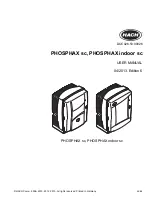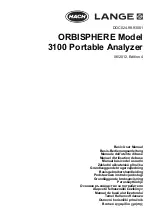
Invert the meter and repeat.
Remove barrier plate from the slot in the body.
Having completely dismantled meter al/ components may be
thoroughly washed in warm soapy water. On no account should
abrasive materials be used to clean the meter parts as meter
accuracy relies upon the maintenance of controlled clearances.
Inspection and Assembly
Inspect the barrier plate for wear, which if present will
manifest it self in the form of "waisting
"
or hollowing of the
barrier surface. Any reduction in barrier thickness will
permit the passage of un measuring liquid. If in doubt a new
barrier should be obtained and fitted
Examine the piston chamber plates for wear and scouring,
the latter will only occur in extreme cases when large
abrasive particles have passed through the measuring
chamber. Any mild signs of scouring ascertained be
polished out with metal polish and self cloth. Plates
displaying heavy signs of wear should be replaced and the
cause of scouring ascertained and a suitable strainer fitted
up-stream of the meter before re-installation of the meter in
the pipework system.
Examine the meter end plates and in particular the "O" ring
seal. It is recoininended that new "O" rings be fitted on
assembly as used rings tend to take a permanent set and
leakage could occur due to the
"
rings
"
inability to reseal
(This is particulary true with PTFE "O" rings). If an "O"
ring has been damaged during fit must be replaced
A piston chamber plate may now be re-assembled to the
body taking care to line up the radial barrier slot with the
axial slot in the body.
Re-fit the end plate and loosely screw home the socket head
cap screws.
Invert the meter and replace the barrier into its slot.
Inspect the piston for signs of wear and ensure that no
particles are embedded in the piston wall. The points of
greatest wear are the
outside
diameter
and
the incide
diameter of the piston , and rise jaws of the radial pear shaped
can slot.
Replace the piston fin to chamber, feeding the can slot over
the barrier plate and check that for al/ positions of the
piston
within the chamber,
the
ainount
of "sfide play" or free
movement is not excessive and that the piston rotates within
the chamber.
Replace the
second chamber
plate and end cover.
To check that small meters are operating correctly after
assembly, place meter to lips and blow into the connection. The
rotation of
the piston within the chamber should be
apparent
.
Pag.3

































